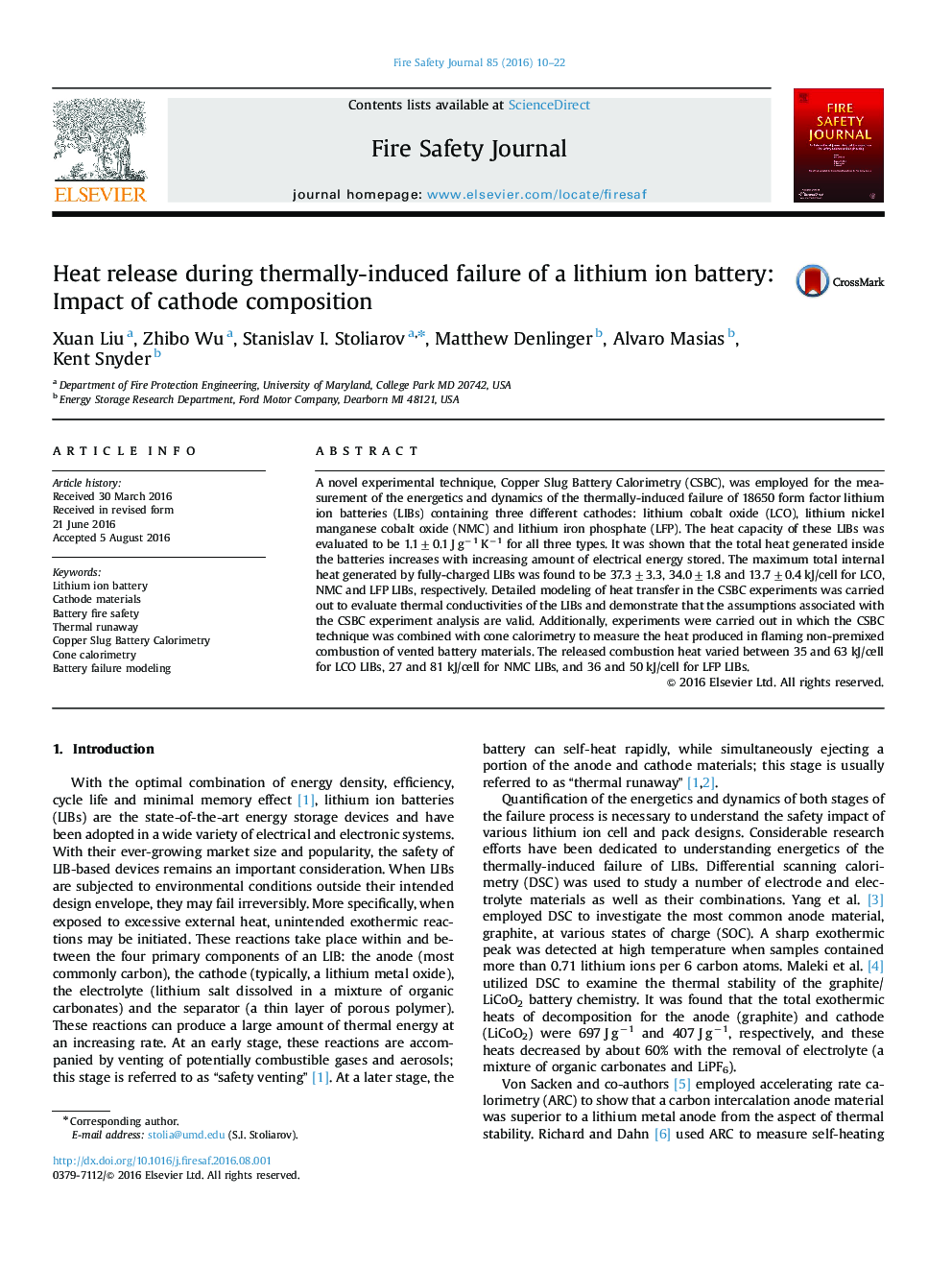| Article ID | Journal | Published Year | Pages | File Type |
|---|---|---|---|---|
| 6741947 | Fire Safety Journal | 2016 | 13 Pages |
Abstract
A novel experimental technique, Copper Slug Battery Calorimetry (CSBC), was employed for the measurement of the energetics and dynamics of the thermally-induced failure of 18650 form factor lithium ion batteries (LIBs) containing three different cathodes: lithium cobalt oxide (LCO), lithium nickel manganese cobalt oxide (NMC) and lithium iron phosphate (LFP). The heat capacity of these LIBs was evaluated to be 1.1±0.1 J gâ1 Kâ1 for all three types. It was shown that the total heat generated inside the batteries increases with increasing amount of electrical energy stored. The maximum total internal heat generated by fully-charged LIBs was found to be 37.3±3.3, 34.0±1.8 and 13.7±0.4 kJ/cell for LCO, NMC and LFP LIBs, respectively. Detailed modeling of heat transfer in the CSBC experiments was carried out to evaluate thermal conductivities of the LIBs and demonstrate that the assumptions associated with the CSBC experiment analysis are valid. Additionally, experiments were carried out in which the CSBC technique was combined with cone calorimetry to measure the heat produced in flaming non-premixed combustion of vented battery materials. The released combustion heat varied between 35 and 63 kJ/cell for LCO LIBs, 27 and 81 kJ/cell for NMC LIBs, and 36 and 50 kJ/cell for LFP LIBs.
Related Topics
Physical Sciences and Engineering
Engineering
Civil and Structural Engineering
Authors
Xuan Liu, Zhibo Wu, Stanislav I. Stoliarov, Matthew Denlinger, Alvaro Masias, Kent Snyder,
